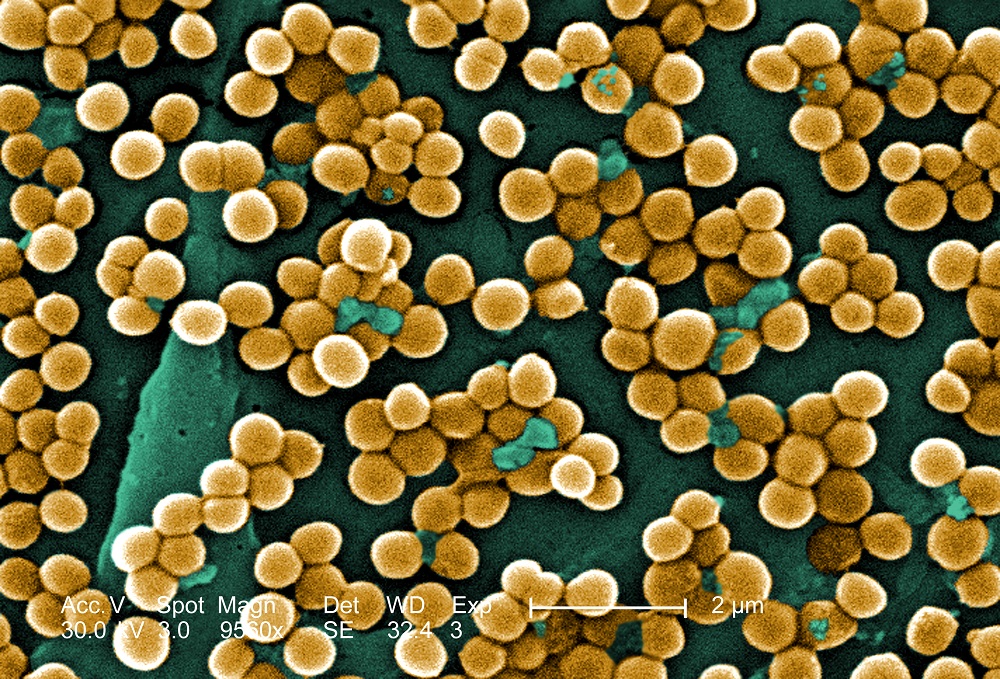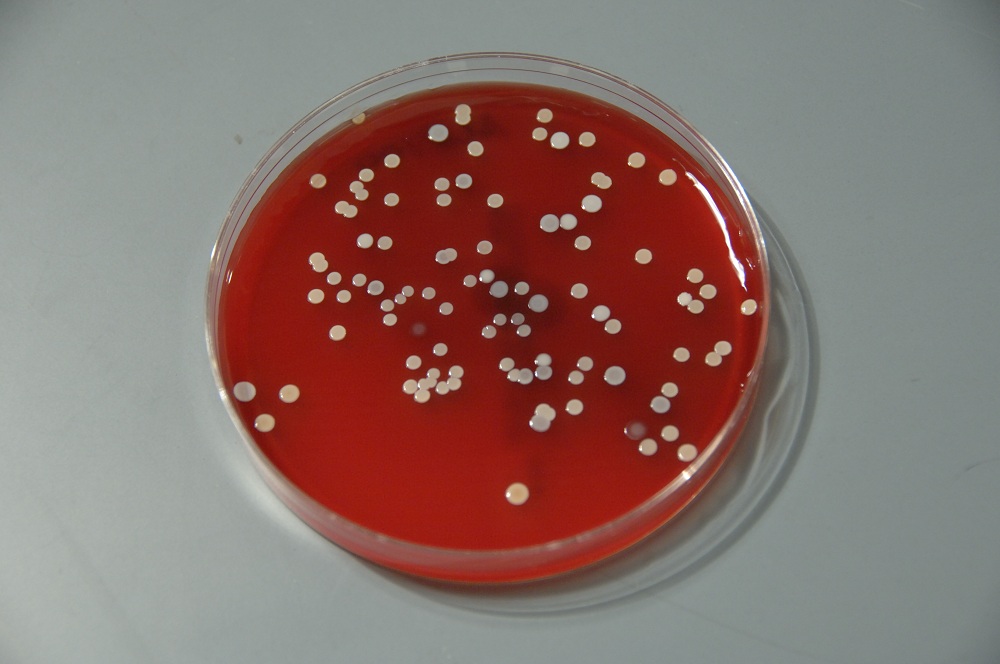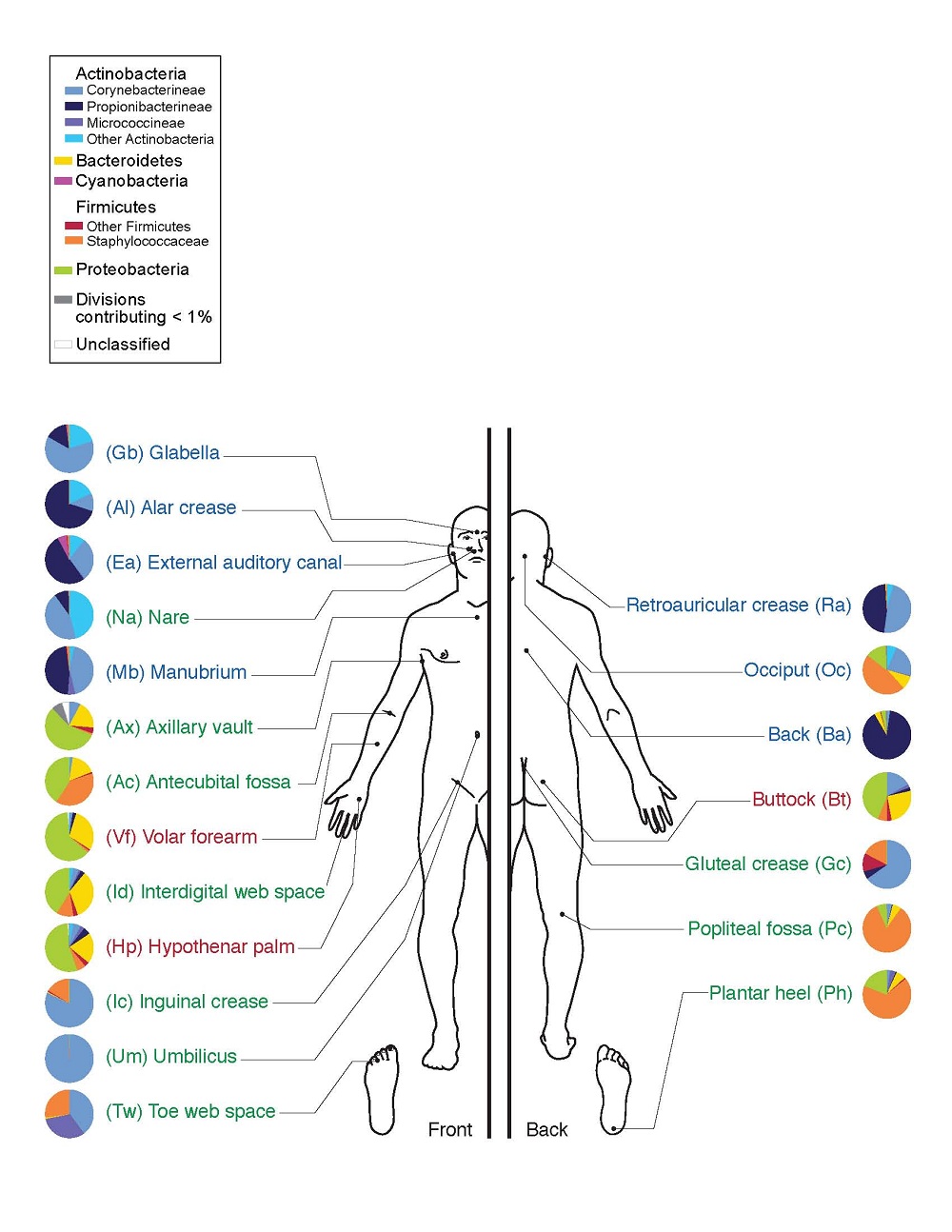Armpits, Belly Buttons & Chronic Wounds: The ABCs of Body Bacteria

Minutes after you were born, bacteria moved in. Since then, their populations have exploded, diversified and spread on your skin and eyes and in your mouth and gut, not to mention other places. These bacterial cells far outnumber your own cells.
Some bacteria on your skin can cause infections, including infections of antibiotic-resistant bacteria like methicillin-resistant Staphylococcus aureus (commonly known as MRSA). Preventing such illnesses is the reason for those restroom signs about proper hand-washing.
But most bacteria on your skin are harmless, and some are actually very helpful. They ward off more dangerous bacteria, aid wound healing and shelter us from certain skin infections. For instance, Staphylococcus epidermidis protects us by taking up space that a more harmful bacterium would otherwise occupy.
Understanding how and why bacteria colonize particular places on the body could point to ways of treating skin and other conditions.
Chronic wounds and bacteria

In the quest to better understand the skin's bacterial communities, Elizabeth Grice studied bacteria on 20 different body parts during a postdoctoral research fellowship at the National Institutes of Health. She learned that certain types of skin-dwelling bacteria thrive in warm, moist places like armpits and between toes. Others prefer wide, dry expanses like the backside.
She also discovered that each person's collection of bacteria is unique — like fingerprints. But unlike your fingerprints, the bacterial communities can change depending on your diet, environment, health, age and many other factors.
Sign up for the Live Science daily newsletter now
Get the world’s most fascinating discoveries delivered straight to your inbox.
Certain diseases, like diabetes, also affect the bacteria on your skin. A major complication of diabetes is sores, or ulcers, on the feet that never heal. Grice suspects that high blood sugar, which is known to change the skin's structure, likely encourages a specific subset of bacteria to grow. And, after various research studies on mice, Grice concluded that the altered bacterial communities on diabetic mice prevent cuts from healing normally. She now hopes to find a way to manipulate the bacteria on the feet of people with diabetes to help ulcers heal.
Belly buttons and armpits

A group of scientists in North Carolina is making some big discoveries about the bacteria in one small body part — the navel. Last year, the scientists launched the "Belly Button Biodiversity project" and are almost ready to publish their findings.
A sneak preview: Swab samples from about 200 volunteers' belly buttons contained an astonishing variety of bacteria — nearly 4,000 different strains, many of which are completely new to scientists.
The researchers know that the real number is actually much higher because the technique they're using can't distinguish every strain of bacteria. For instance, if they used the technique to identify mammals, dogs and cats would be grouped in the same category.
The scientists expected that, in addition to each person's special collection of bacteria, there would be a few common strains living on everyone. To their surprise, they could not find a single strain of bacteria common to all the volunteers; the researchers aren't yet sure what to make of this discovery.
The belly button project is part of a broader effort called "Your Wild Life" that's working to identify all the organisms on and in the human body as well as those in homes and neighborhoods. The project, which is based in North Carolina, is using crowd-sourcing techniques to collect samples from around the country. Current studies focus on bacteria, fungi and insects.
A future project will be "Armpit-pa-looza" — a study of the microbes in the armpits of humans and other primates. Bacteria in the armpit produce a distinctive odor that we recognize in ourselves and others near us. Many scientists believe that this odor can communicate not only who we are, but also if we have certain diseases. A better understanding of armpit bacteria could have a wide range of applications in health and hygiene.
This Inside Life Science article was provided to LiveScience in cooperation with the National Institute of General Medical Sciences, part of the National Institutes of Health.
Learn more:










